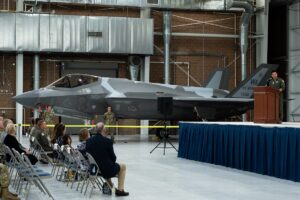
The F-35 Joint Program Office and Lockheed Martin [LMT] are coming to terms on data rights language to be included in the Lot 15-17 contract for the fighter, the JPO said. "We continue to work with Lockheed Martin Aeronautics to ensure the government has the technical data and computer software for F-35 that the U.S. government needs to maintain readiness and develop an affordable long-term sustainment strategy," the program said in response to an email request for insights on the…














